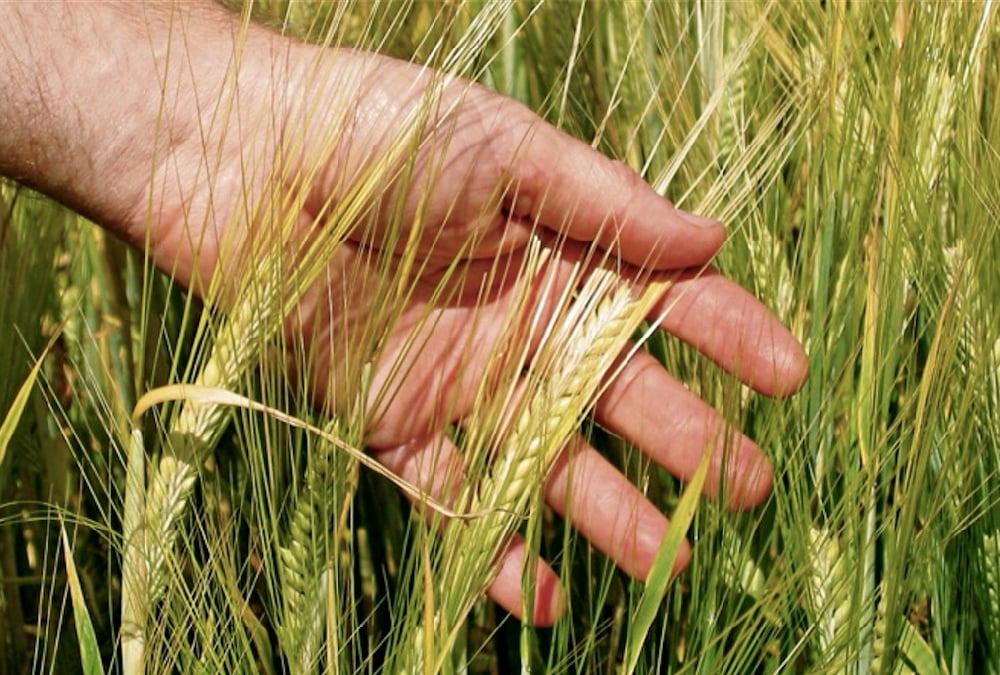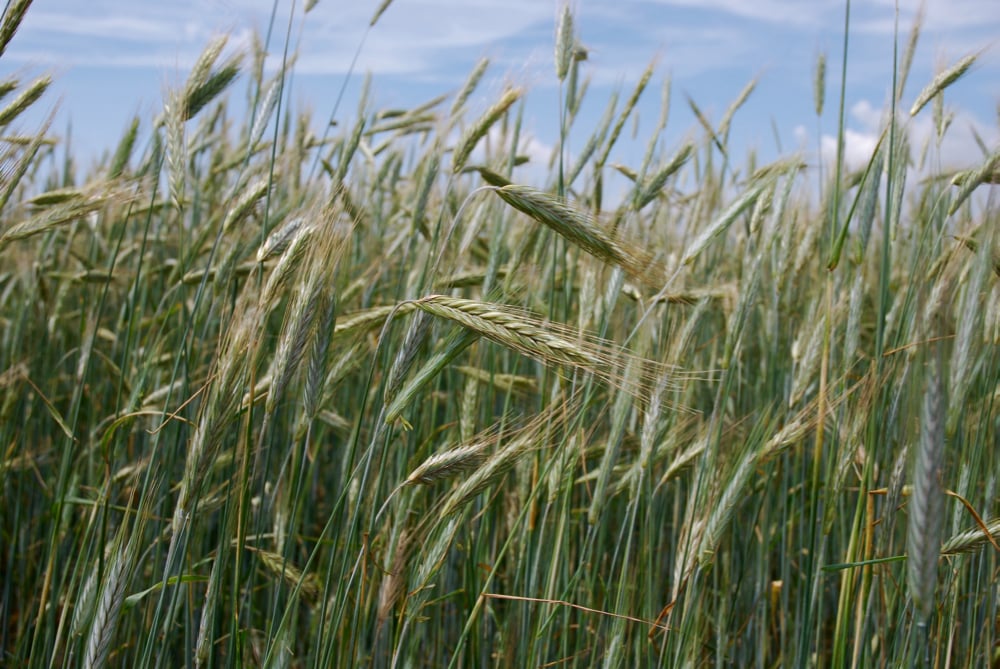With all the day-by-day and minute-by-minute noise that rocks today’s grain and oilseed trading, it can seem impossible to pick out the vital messages that the market is actually sending. Country Guide sent veteran ag reporter Richard Kamchen to Wild Oats GrainWorld in Winnipeg this winter to listen for the home truths about 2015’s grain and oilseed crops, and to report back on the key issues that will shape our markets throughout the year. You’ll like some of what he heard. Other parts, not quite so much.
Barley
Tight stocks and poor quality are driving bids in malt markets, and even in feed. But will those prices last?
Maltsters and feeders are having a tough time coping with tight barley stocks. Buyers were thrown for a loop in 2014 as high moisture during harvest decimated quality throughout the barley-growing areas of the U.S. and Canada.
“We’re used to seeing a bad barley malting crop in one region or another, but it’s not very often we see a wipeout right from Idaho up to northern Saskatchewan,” Lorelle Selinger, Cargill Malt’s North American merchandising manager, said at Wild Oats GrainWorld.
While yields were near average, quality was not, and acceptance rates were very, very low.
“We faced a lot of DON issues this year, a lot of sprouting issues, which for malting barley is obviously a concern,” Selinger said.
It’s not the first time maltsters have been against the wall. Coming out of the 2012 crop year, Canada had its lowest historic carry-out stocks. This caused some real anxiety before 2013 saw pressures ease with extremely high yields and grades. But then another bad year followed, with reduced acres and terrible quality.
Read Also

Advancing regenerative farming practices
Last year, Griffith Foods launched a pilot program to promote regenerative agriculture in Ontario wheat in partnership with Parrish &…
On their way into the 2015 crop year, buyers face not only their tightest carry-out stocks in history, but probably the worst-quality carry-out too.
“That’s going to make it really tough for some of us maltsters to find a barley we need to get us into new crop,” Selinger said, adding that buyers are importing malt-quality stocks from Europe to compensate for the shortfall.
Due to its growing reliance on Canada, the U.S. is having to do likewise. Its production and ending stocks have been a little less volatile, but with U.S. demand for malting barley increasing, its supplies keep getting tighter.
The combination of higher cross-border shipments to the U.S. plus falling Canadian barley acres also means that Canada is becoming a smaller player on the global stage than it has been historically.
Taking Canada’s spot is Argentina, which has become a significant player over the past decade to the point of developing the capability to export up to three million tonnes of malting-quality barley a year.
Favourable to Canadian barley acres in 2015, however, is that a lot of other grain prices are a little lower, and Selinger suspected there will be a slight jump in acres in 2015 in both Canada and the U.S.
Robert Saik, CEO of Agri-Trend Group of Companies, was far more bullish, predicting barley acres will soar 22 per cent to 7.2 million acres, pulled up by malt industry demands: “Barley could be a real alternative in some areas, I think we’ll see that,” Saik said.
Selinger, however, thought sourcing malt barley domestically would continue to be a struggle.
“We’re just not producing as much barley to pick from as we’re used to,” she said, pointing out that as recently as 2003, Canada seeded over 12 million acres.
Global barley production has also been on the decline — both feed and malting — for many years now, and while needs are currently being met, beer demand continues to increase.
Beer production has steadily grown over the last 25 years, including another increase in 2014. The U.S. remains the primary importer of beer and China the primary consumer.
Beer drives malting barley demand and “on the global front, it’s forecast beer sales are going to rise over the next five years at quite a significant pace to what it has risen historically,” said Selinger.
Part of this increase reflects the growth of premium beers. In North America, craft beer production has markedly boosted demand.
“In 1990, there were about 400 registered craft breweries. This year they figure over 4,000. So they’re becoming a much bigger player. And why that’s important to barley is the average craft beer will use 90 to 100 per cent malt content. The average commercial beer, some of it will only have 40 or 50 per cent, and using adjuncts for the rest,” Selinger said. “So with this huge increase in the production of craft beer, the demand for malt in North America is increasing.”
Feed tight too
Supplies are also tight in feed barley, but buyers are switching to alternative grains as barley prices itself out of feed rations.
Prairie production of 7.1 million tonnes in 2014 represented the smallest crop since 1968, and 2014’s seeded acres of 5.5 million were the lowest since 1964, said Steve Bloss, Maple Leaf Food’s manager of purchasing and risk management. He called 1996 the last year of significant Prairie barley acreage.
“Barley acreage throughout the three Prairie provinces has trended sharply lower ever since. This is really hard for us as grain buyers,” Bloss said, adding Manitoba has had minimal barley stocks to pursue. “If you look at Manitoba, we were just 300,000 acres of barley last year. That’s down 80 per cent from 1996.”
With maltsters having paid large premiums for malting barley, however, farmers might be lured back in 2015, Bloss said.
“We think there’s going to be a bit of a rebound in barley,” Bloss said, noting trade estimates range from 10 to 15 per cent. But even a 15 per cent gain would still result in tight stocks, he added. “Our carry-out, we’re sitting at 900,000 tonnes. The trade is using a much lower number. We’re hearing numbers anywhere from 600,000. But anything under one million tonnes for barley carryout is extremely tight.”
The high price of feed barley, though, is causing buyers to look at alternatives. Feed-quality barley and wheat have been trading at par in southern Alberta, with sharp barley premiums versus other feed grains in Manitoba.
“Low-vomitoxin feed barley is actually trending upwards of 120 per cent of the price of corn,” said Bloss. That adds up to switching to more corn and wheat. “Our company’s got five feed mills throughout the province. We probably buy somewhere in the neighbourhood of 430,000 tonnes of feed grains per year — it doesn’t have to be feed barley.”
Bloss also anticipated that barley price spreads against alternative ingredients would remain strong. “We have to look at the price spread between the three grains,” Blass said. “I really think with this kind of balance sheet for next year, we’re going to continue to see lower inclusions in our least-cost formulations.”
Oilseeds
The thrill may be ebbing for canola, while excitement builds for soybeans and flaxseed
In a rare twist, canola is expected to lag behind the acreage jumps of other Prairie oilseeds in 2015.
Robert Saik, CEO of Agri-Trend Group of Companies told Wild Oats GrainWorld that farmers haven’t absolutely finalized their cropping plans for 2015. But whatever happens, he believed rail logistics would play a part in planting intentions.
“Rail and transportation logistics issues are figuring into crop programing. (Farmers) are reticent to plant crops when they still have the old crop in the bin and no sign of moving it. The decline in rail transportation since November will keep farm stocks high and a widening basis level on export crops especially,” said Saik.
Saik predicted Canadian canola area in 2015 would be almost identical to last year at 20.4 million acres, but Brian Conn, Louis Dreyfus Commodities’ vice-president of Canadian oilseeds, anticipated a 4.5 per cent decline to 19.4 million acres. Conn thought Manitoba would be losing the largest percentage of canola acres as farmers grew more corn and soybeans.
With lower acreage, the table would be set for reduced production, which Conn pegged at 15.14 million tonnes versus 15.56 million in 2014, and the record 18.03 million tonnes of 2013.
Canadian exports of 2015-crop canola could decline to 8.11 million tonnes from 8.57 million anticipated in 2014 and the record of over nine million in 2013-14, Conn added. He saw the largest demand drop coming from China, which he expected would purchase 3.18 million tonnes of canola from Canada, down from 3.4 million in this current crop year.
“Over the last five years, our exports to China are really a big swing factor in terms of what overall exports are going to be,” Conn said.
Domestic canola demand, however, is on the rise. Conn estimated the 2014-crop domestic crush between 7.1 million and 7.2 million tonnes — up about 200,000 tonnes from the previous year — and a record eight million tonnes in the 2015 crop year.
“We think from a capacity utilization standpoint, it makes sense to start with a higher number until we see otherwise,” said Conn.
Conn added that Cargill is completing its new plant in Camrose, Alberta, which will add over 2,500 tonnes of daily capacity in the second quarter of 2015, while Richardson is planning to expand its Lethbridge plant to boost capacity to over 1,200 tonnes a day by mid-2016.
The soybeans bounce
A bearish outlook for world soybean markets hasn’t tarnished the crop for Prairie growers.
Agriculture Canada oilseeds analyst Chris Beckman pointed out Canada’s soybean area has doubled over the past 10 years, driven by western Canadian expansion, which has tripled.
For 2015, he forecast Canadian soybean production to rise by about 10 per cent to 6.7 million tonnes, based on increased area and higher yields. Soybean area in Western Canada in 2015 could increase by about 20 per cent to slightly under two million acres, Beckman said.
Saskatchewan soybean area is forecast up by about 50 per cent to a little under 500,000 acres, while Manitoba’s rises by about 10 per cent.
“Over the long run, I think there’s good potential to grow the crops at roughly the same size as peas in Saskatchewan, which is… about two million to five million acres,” Beckman said.
Western expansion is being driven by agronomics and economics. Soybeans require fewer inputs than canola and present a different disease profile than either wheat or canola, Beckman said. Plus, there’s a growing world demand for edible oils and protein.
“The scope and pace of expansion across Western Canada depends on the pace of release of lower heat unit varieties,” Beckman added.
But as soybean production moves westward, he anticipated national yields falling off.
“Yields in Western Canada are lower than Eastern Canada because of the lower temperatures and drier growing conditions, so as the cropping area expands westwards, the pressure will be to reduce national yields despite the continuous release of new and improved soybean varieties,” Beckman said.
While domestic crush remains stable at 1.6 million tonnes, he forecast exports up about 12 per cent to 4.8 million tonnes in 2015.
Soybeans are Canada’s fourth-largest export crop, “and depending on expansion area and what happens on durum, they’re battling to become No. 3,” Beckman said.
Flaxseed set to rise
Flaxseed area is on the rise too, but more to levels that were typical prior to when traces of Triffid disrupted Canada’s exports to the EU.
Saik estimated 2015 flaxseed area would increase 13 per cent to 1.8 million acres.
“We’re getting back to those pre-2009 levels of supply, and the industry is recovering,” said Chuck Penner, president of LeftField Commodity Research.
Penner noted 2014 acreage was up significantly and heavily concentrated in Saskatchewan. Although 2014 flax production reached over 800,000 tonnes, it included more poor quality. Exports have returned to previously attained levels, but the destinations have altered.
“We’re back to about a 640,000-tonne export program. So the total volumes are back to where they were before, and that’s very positive. But the composition is very different. Europe is in the market for about a quarter of the crop, the U.S. for another quarter, but China is taking almost half of it,” said Penner. “I think China is going to present a larger opportunity for sustaining (acreage) growth of back up to the 1.5- to 2.0-million-acre mark.”
WHEAT
Extreme volatility could hit wheat, while lofty prices in durum may return to Earth
The crisis in Ukraine and unknown weather events have market bears on high alert, Lawrence Yakielashek, general manager of FarmLink Marketing Solutions, said at this year’s Wild Oats GrainWorld conference. Although the bears may have been winning the day, some commodity funds have indicated to him they’re reversing their short positions and getting long in deferred months.
“We’re going to see some extreme volatility in the wheat market,” Yakielashek said. “We believe the spring months are going to be the time when the fireworks are going to start hitting the match.”
In Ukraine, economic conditions continue to worsen and may be graver than is being reported in the media. Interest rates are high and cash-starved farmers are selling crops they might under normal circumstances have held on to. Approximately 8,100 square miles of land in Ukraine are under turmoil, and some of the crops there remain standing in the fields unharvested.
About 25 per cent of the country’s winter wheat crop is in bad shape, and farmers there may end up planting less wheat and reducing their fertilizer and herbicide usage.
“Currently, planting costs in Ukraine are up about 150 per cent over last year,” Yakielashek said. “If you want to borrow some money, you have to pay 19.5 per cent, and input costs are up substantially. So what we might see in Ukraine is actually lower production.”
And while any reductions in Ukraine are unlikely to prevent 2014 world wheat ending stocks from reaching their ninth record high in the last 20 years, demand is surging. Global consumption has increased over the last five years by nine per cent, or 62 million tonnes, Yakielashek noted. World wheat consumption today is 1.95 million tonnes per day, and demand could climb another 2.1 per cent in 2015, he added.
In Canada, supplies are tight. Yakielashek predicted carry-out would be down this year by about 30 per cent to 5.5 million tonnes. Even if 2015 production reached 23.5 million tonnes — a high estimate — supplies would still shrink. (Robert Saik, CEO of Agri-Trend Group of Companies, believed non-durum Canadian wheat-seeded acres would fall six per cent in 2015 to 17.9 million acres.)
“Even with a four per cent lower export figure for next year, we have a tight carry-out of just maybe four million tonnes, down 28 per cent from the current potential carry-out of the 2014-15 crop year,” Yakielashek said.
But an expected rise in crude oil prices would be no boon for Canadian farmers. As crude goes, so goes Canada’s currency, and Yakielashek said current forecasts are suggesting crude oil could return to $66 to $76 per barrel by the end of 2015. If that happens, the loonie could surge to about US87 cents and hit wheat prices by about 50 cents a bushel, he predicted.
Durum uncertain
While good returns in durum could boost Canadian acres, there’s no way of knowing what’s in store for farmers who plant the crop this spring.
Saik estimated Canadian durum area would increase 15 per cent to 5.5 million acres, but it’s unclear whether growers will enjoy another year of premium prices. Alan Hegemeier, merchandiser for CHS Inc., has heard rumblings of a 20 per cent acreage boost, and that would definitely get the attention of buyers, especially if the harvested crop ended up high quality.
As well, good crops in North Africa and the EU would guarantee an end to the party.
Quality might be the name of the durum game, but buyers’ ability to adapt to poor crops last year could endanger the premiums they’d previously been willing to pay for top grades.
“The EU just had poor timing in its crop; right before harvest there was a lot of rain. Morocco usually takes nothing but No. 1 wheat — it won’t even look at anything else — but this year, it took 3s… Same thing with Algeria,” noted Hegemeier. “The interesting thing for next year is, will they pay the premium for the higher quality, or will they continue to grind the lower quality at the lower price? It’s the same story in the U.S. with the domestic mills. We’ve forced them to get by with less, and now they’ve figured out a way to make it work.”























